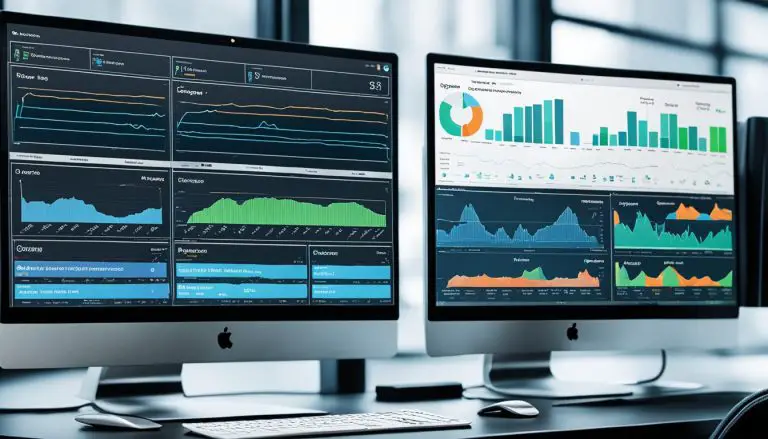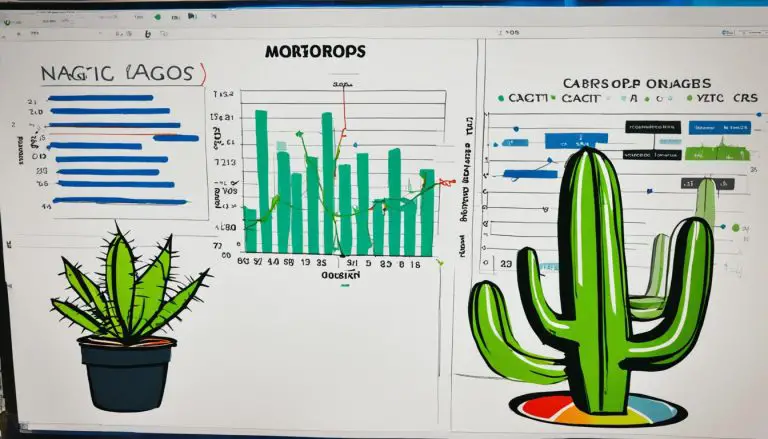What is a MAC Address Explained
A MAC address, also known as a media access control address, is a unique identifier assigned to each device connected to a network. It consists of a 12-digit hexadecimal number and is located on the device’s network interface card (NIC). The MAC address plays a crucial role in locating devices on a network and performing network diagnostics. It belongs to the data link layer of the OSI model, facilitating communication between nodes. Each network interface in a device has its own unique MAC address. Finding the MAC address can be done through system settings or network configuration.
Key Takeaways:
- A MAC address is a unique identifier assigned to each device on a network.
- It consists of a 12-digit hexadecimal number located on the device’s network interface card (NIC).
- MAC addresses are essential for locating devices on a network and performing network diagnostics.
- They belong to the data link layer of the OSI model, ensuring communication between nodes.
- Each network interface in a device has its own unique MAC address.
How to Find a MAC Address on Different Devices
Knowing how to find the MAC address of your device is essential for network configuration and troubleshooting. The process of finding the MAC address may vary depending on the device you are using. Here is a guide on how to find the MAC address on different devices:
Finding MAC Address on Windows:
Note: The following steps are for Windows 10. The process may vary slightly for other versions of Windows.
- Press the Windows Key + X on your keyboard and select Command Prompt.
- In the command prompt, type ipconfig /all and press Enter.
- Look for the Physical Address under the network adapter you are using. The 12-digit alphanumeric code represents your MAC address.
Finding MAC Address on Mac:
Note: The following steps are for macOS Catalina. The process may vary slightly for other versions of macOS.
- Click on the Apple menu in the top left corner of your screen and select System Preferences.
- Click on Network.
- Select the network interface you are using from the left sidebar.
- Click on the Advanced button.
- Go to the Hardware tab. Your MAC address, also known as the Ethernet ID, will be displayed.
Finding MAC Address on Linux:
Note: The following steps are for Ubuntu. The process may vary depending on the Linux distribution you are using.
- Open the Terminal by pressing Ctrl + Alt + T.
- Type ifconfig -a and press Enter.
- Look for the network interface you are using. The MAC address is usually listed as HWaddr or ether.
Finding MAC Address on iPhone and Android:
Note: The following steps are for iOS 14 and Android 11. The process may vary slightly depending on the operating system version of your device.
- On your iPhone or Android device, go to Settings.
- Tap on Wi-Fi or Connections.
- Find the network you are connected to and tap on the i or gear icon next to it.
- The MAC address, also known as the Wi-Fi address or physical address, will be listed.
Finding MAC Address on PlayStation and Xbox:
Note: The following steps are for PlayStation 5 and Xbox Series X. The process may vary slightly depending on your gaming console version.
- On your PlayStation or Xbox, go to the Settings menu.
- Select Network or Network Settings.
- Look for the MAC Address or Wired MAC option.
- The MAC address will be displayed on the screen.
By following these steps, you can easily find the MAC address on various devices. This information is valuable for network troubleshooting and configuration purposes.
Types of MAC Addresses
MAC addresses can be categorized into three main types: unicast, multicast, and broadcast. Each type serves a different purpose in network communication.
Unicast MAC Address
The unicast MAC address is the most common type and is used for communication between a single transmitting device and a single destination device. When a device sends data, it includes the unicast MAC address of the intended recipient in the data frame header. This ensures that the data is delivered to the specific device and not to any other devices on the network.
Multicast MAC Address
A multicast MAC address allows a source device to transmit a data frame to multiple devices in a multicast group. The multicast MAC address is used when a device wants to send data to a select group of devices rather than broadcasting it to every device on the network. Devices that belong to the multicast group can receive the data by recognizing their multicast MAC address in the data frame header.
Broadcast MAC Address
The broadcast MAC address represents every device on a network. When a device sends data using the broadcast MAC address, the data is received by all devices on the network. This is useful for sending information that needs to be received by every device, such as network-wide announcements or broadcast messages.
In summary, unicast MAC addresses are used for one-to-one communication, multicast MAC addresses are used for one-to-many communication within a specific group, and broadcast MAC addresses are used for one-to-all communication across the entire network.
| MAC Address Type | Purpose |
|---|---|
| Unicast | Communication between a single transmitting device and a single destination device |
| Multicast | Transmission of data to multiple devices in a multicast group |
| Broadcast | Transmission of data to every device on the network |
MAC Address vs. IP Address: Key Differences
MAC addresses and IP addresses are both essential components of network communication, but they serve different purposes and have distinct characteristics. Understanding the differences between MAC addresses and IP addresses is crucial for network configuration and troubleshooting.
MAC address characteristics:
- A MAC address is a unique identifier assigned to each device’s network interface card (NIC).
- It is a 12-digit hexadecimal number, typically displayed in six pairs of two-digit numbers separated by colons or hyphens.
- MAC addresses belong to the data link layer of the OSI model, facilitating communication between nodes on a local scale.
- They are permanently assigned to a device’s hardware and cannot be changed.
IP address characteristics:
- An IP address is a numerical label assigned to each device connected to a network.
- It consists of four sets of numbers separated by periods, such as 192.168.0.1.
- IP addresses operate at the network layer of the OSI model, enabling communication between devices on a global scale.
- They are assigned by a network administrator or internet service provider and can be changed or dynamically assigned.
“MAC addresses are unique hardware identifiers specific to each device, while IP addresses represent the device’s location on the internet or a network. MAC addresses are like physical addresses, allowing devices to communicate within a local network, while IP addresses function like postal addresses, enabling communication across different networks.”
Key differences between MAC addresses and IP addresses:
| MAC Address | IP Address |
|---|---|
| Assigned to a device’s network interface card (NIC) | Assigned by a network administrator or internet service provider |
| Unique identifier on a local network | Represents the device’s location on the internet or a network |
| Permanent and unchangeable | Can be changed or dynamically assigned |
| Operates at the data link layer | Operates at the network layer |
Conclusion
In summary, MAC addresses and IP addresses are distinct identifiers used in network communication. MAC addresses are hardware-based, unique, and assigned to a device’s NIC for local network communication. On the other hand, IP addresses are assigned by network administrators or internet service providers and represent a device’s internet address for global network communication. Understanding the differences between MAC addresses and IP addresses is essential for proper network configuration and troubleshooting.
MAC Address and Network Communication
In network communication, MAC addresses play a crucial role as unique identifiers for devices. They are used in the data link layer of the OSI model to ensure proper node-to-node communication. The MAC address of the source and destination devices is included in the header of each data frame, allowing for seamless transmission and reception of data.
The role of MAC addresses in the network is vital, as they enable devices to locate and communicate with each other. Each network interface in a device has a unique MAC address, which helps in identifying and routing data to the correct destination. This addressing scheme ensures efficient and reliable network communication.
The MAC Address in the OSI Model
In the OSI model, the MAC address is part of the data link layer, which is responsible for transmitting data between adjacent nodes in a network. The MAC address is encapsulated in each data frame, along with other necessary information, such as the source and destination IP addresses.
By including the MAC address in the data frame’s header, the network devices can determine if the frame is intended for them or needs to be forwarded. This process ensures that data is sent to the appropriate device, preventing unnecessary data transmission and optimizing network performance.
Overall, the MAC address plays a vital role in network communication, allowing devices to connect, communicate, and exchange data efficiently. Its presence in the data link layer of the OSI model ensures accurate routing and delivery of data across the network.
| Role | Location |
|---|---|
| Data Link Layer | Encapsulated in the header of each data frame |
| Unique Identifier | Assigned to each network interface in a device |
| Communication Efficiency | Ensures proper node-to-node communication |
| Network Location | Aids in locating and routing data to the correct destination |
Conclusion
The importance of MAC addresses in networking cannot be overstated. These unique identifiers play a crucial role in identifying and locating devices on a network. Without MAC addresses, it would be nearly impossible to establish proper node-to-node communication.
MAC addresses are vital for network configuration, troubleshooting, and device filtering. They allow network administrators to assign specific permissions and restrictions to individual devices, ensuring the security and efficiency of the network. Additionally, understanding MAC addresses is essential for diagnosing network issues and performing accurate network diagnostics.
In summary, MAC addresses are the backbone of network communication. They serve as the foundation for seamless interaction between devices, enabling data to flow smoothly across the network. Whether you’re setting up a new network or troubleshooting an existing one, having a clear understanding of MAC addresses is key to achieving optimal network performance.
FAQ
What is a MAC address?
A MAC address, also known as a media access control address, is a 12-digit hexadecimal number assigned to each device connected to a network. It serves as a unique identifier for the device and is found on the device’s network interface card (NIC).
How can I find a MAC address on Windows?
There are two ways to find the MAC address on Windows machines. You can either use the command prompt or find it without using the command prompt.
How do I find a MAC address on a Mac?
The MAC address can be found in the system preferences on a Mac.
How can I find a MAC address on Linux?
Linux users can find the MAC address through the terminal.
Where can I find the MAC address on an iPhone?
The MAC address can be found in the device’s settings on an iPhone.
How do I find the MAC address on an Android device?
The MAC address can be found in the device’s settings on an Android device.
Where can I find the MAC address on a PlayStation?
The MAC address can be found through the system settings on a PlayStation.
How do I find the MAC address on an Xbox?
The MAC address can be found through the system settings on an Xbox.
What are the types of MAC addresses?
There are three types of MAC addresses – unicast, multicast, and broadcast.
What is a unicast MAC address used for?
A unicast address is used for communication between a single transmitting device and a single destination device.
What is a multicast MAC address used for?
A multicast address allows a source device to transmit a data frame to multiple devices in a multicast group.
What is a broadcast MAC address used for?
A broadcast address represents every device on a network and allows a source device to send data to every device on the network.
How does a MAC address differ from an IP address?
A MAC address is a unique hardware identifier assigned to devices on a local scale, while an IP address is assigned by a network administrator or internet service provider and represents the device’s internet address.
Where do MAC addresses operate in the OSI model?
MAC addresses operate at the data link layer of the OSI model.
Why are MAC addresses important in network communication?
MAC addresses play a crucial role in network communication by ensuring proper node-to-node communication and allowing for seamless communication between devices on the network.
Source Links
- About the Author
- Latest Posts
Matthias Böhmichen is the founder of howto-do.it . He is using Linux since 1991 and fell in love with windows a few years later. He likes to discover new technologies, especially hard- and software.






